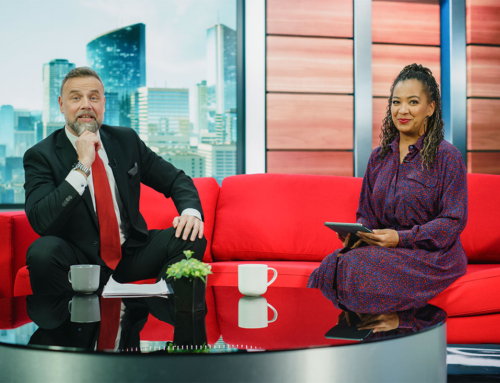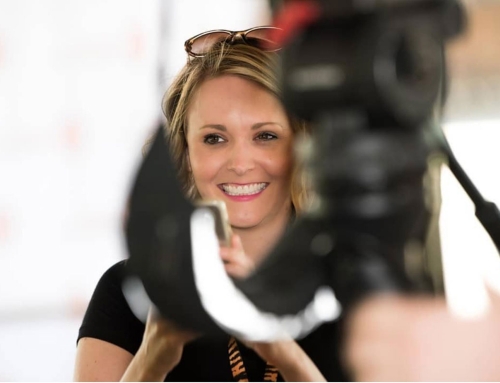The more things change, the more they stay the same. That old adage definitely has some truth to it when it comes to the ever evolving, yet sometimes reassuringly reliable, world of media.
Two experienced local journalists — Cincinnati Enquirer columnist and “That’s So Cincinnati” podcast co-host Jason Williams and LINK Media LLC President and CEO Lacy Starling — shared their insights recently with an audience of communications professionals. As part of the 2022 Media Day, presented by the Cincinnati PRSA chapter, Starling and Williams participated in a session exploring the topic “What’s New in News.”
Any way you slice it, the news business has changed tremendously over the past decade: shrinking newsroom work forces; relentless demand to be plugged in at all times; contraction and consolidation among legacy media companies; expanding competition from startups and social media; and publishing schedules shifting to fewer days per week or migrating to digital-only.
Relationships matter as much as ever
Still, as journalists continue to adapt, some truths about how they operate – and how PR professionals can most effectively work with them – don’t change at all. Chief among them: Relationships still rule everything.
“If I don’t have relationships with people, I don’t have a column, I don’t have a story,” said Williams. “I tell young journalists: Develop sources. Develop relationships. There is still no substitute for it.”
Williams works hard to build and maintain relationships with local decision-makers, political insiders, policy experts and everyday citizens who are affected by and help shape the political scene. But he works just as hard to build relationships with smart public relations pros and corporate communications leaders, who help him keep a handle on what’s new, important and interesting in Greater Cincinnati.
Starling agreed that building relationships with great sources is critical to how the editorial team at LINK Media, which focuses exclusively on Northern Kentucky news, develops great coverage.
“We can’t possibly know what’s happening throughout all of Northern Kentucky without the relationships with communications professionals,” she said.
In addition to relationship-building, both longtime journalists agree that a few other fundamentals have not changed — good reporting, good storytelling, objectivity and the pursuit of the truth.
“What hasn’t changed? Tell the truth and be fair,” Williams said.
The urgency of now
As much as some fundamentals of the news business remain just as true today, the landscape does continue to evolve. A sense of urgency has always defined journalism, but these days it’s relentless — and likely to become even more so. After all, many people are getting their news from Facebook and Twitter, whether it’s accurate and objective or not.
“There’s so much competition for eyeballs and information, with social media and all the other things you can find,” Starling said. “Everybody wants their information yesterday.”
Getting people to have patience while reporters work to discover the whole story can be difficult, she said, but sometimes the LINK team forgoes being first to report a breaking story to develop it further and accurately.
Another force having an impact on the news business is the growing polarization gripping the country when it comes to a variety of social, political and policy issues. Many pundits and observers say this is among the most divided times in U.S. history, and Williams and Starling see evidence of that in their profession: A lot of people will only get their news from sources with which they already agree, and there’s a tendency to lump all journalists together – including opinion writers, hyper-conservative or clearly biased journalists, national talking heads together or local reporters.
Working effectively with the media
Here are few thoughts from Williams and Starling on how PR and corporate communicators can work well with media:
- Before reaching out, ask yourself “Who cares about this information?” Be honest with yourself over whether it would be of interest to anyone outside of your client or organization.
- Do your homework to make sure your idea is a good fit for the reporter and outlet you’re pitching.
- Work to understand the data and how it shapes coverage. Reporters have metrics telling them how long readers engage with their work, where they abandon a story, which topics garner the most interest and much more. Work with the reporter to ensure your idea can help them keep people engaged.
- Brevity is appreciated, rather than long-winded press releases or complex diatribes when they reached out for a short CEO quote or a brief statement on an issue.
- Help your clients or spokespeople “get it.” Media coaching can help, as can showing them examples of local stories that had great engagement. And make sure they are available to talk rather than just pitching an idea and then being too busy.
Vehr Communications was the presenting sponsor of PRSA’s 2022 Media Day, and Senior Account Executive Karen Bells, a former journalist, moderated the “What’s New in News” session. Other sessions included “Throw Your Best Pitch,” “Brand as Experience” and a keynote Q&A with Phil Mattingly, senior White House correspondent for CNN.








